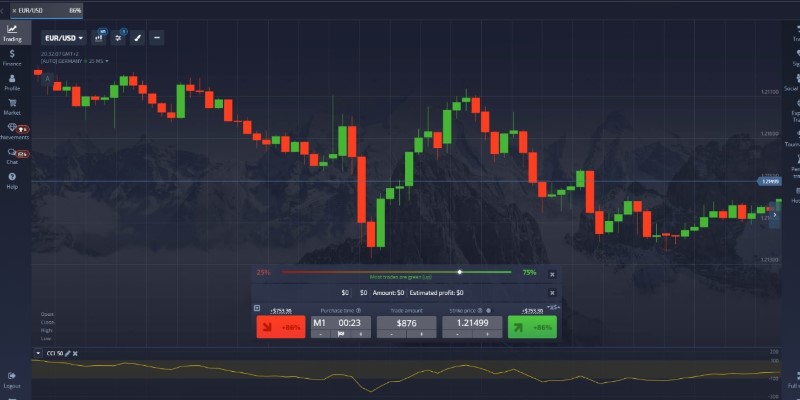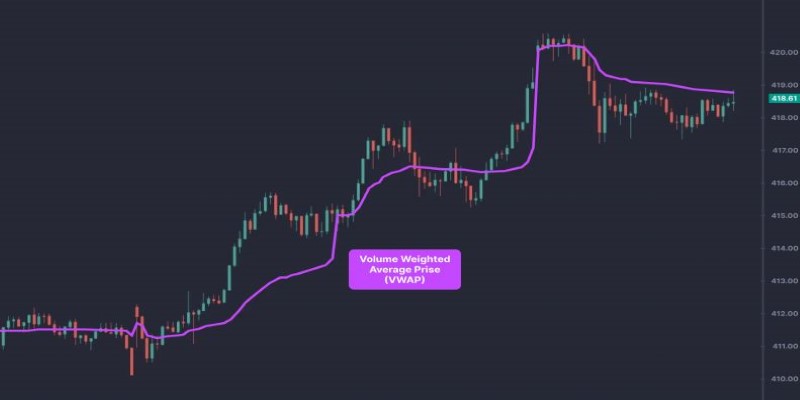Steps to Becoming a Successful Forex Trader: Proven Strategies
Sep 18, 2024 By Verna Wesley
Forex market trading is appealing to many because of its lifestyle: rapid turnouts, high-priced holidays, and trading in amazing locales. However, this market requires significant work to succeed. Successful market traders may brag about their wealth, but they rarely discuss their years of hard work. Success as a forex trader requires time, like any other job. Were going to tell you the best forex trading market tips and steps that can help you become a successful trader.
Know Forex Trading's Best Hours

To become a successful trader, you should know the best hours you need to work on. On weekdays, the forex markets are open at all times. When countries throughout the world follow daylight saving time, the foreign exchange market starts its Monday session at midnight GMT+2 and ends its Saturday session at midnight GMT+2. Trading hours start with Japanese and Australian equities markets in the east and end with US markets in the west.
When stock markets are open for business, currency traders tend to be busier. Over its equities market hours, the Yen has the potential to be traded compared to when the stock markets that support it are off. US currency markets trade more while equity markets are open. Intermarket overlap occurs during the peak trading hours for currency pairs. The EURO / US Dollar (EUR/USD) successful market traders may trade more as European exchanges close and US markets open.
Follow Interest Rates And Monetary Policy
Central bank monetary policy affects currency markets, and you should be aware of the policies and factors affecting them. High interest rates and limited money supply are predicted to boost a country's currency, whereas low interest rates and rising money supply are likely to depreciate it. To be the best forex trader, you need to exchange one currency against another. The EUR/USD trader will evaluate the relative differences in interest rates and monetary policy between Europe and the US to determine the exchange rate direction.
Economic data guides central bank behavior, so traders should monitor news that may affect policy. Inflation, employment, and GDP are important news items. Key financial indicators can help predict forex market movements. Traders can benefit from monitoring the economic calendar.
Understand Top Forex Technical Analysis Indicators

Technical analysis is vast and has many signs. These indicators can be used to time entries and exits and identify trends, volatility, and momentum. Beginners in technical analysis may want to minimize the number of indicators to avoid duplication and discover significant forex market aspects. Popular indications to start with include:
Modified Averages
Modified averages help determine the forex trading market by averaging price data. Forex prices above the moving average indicate an uptrend. A downtrend is assumed when the forex price is below the moving average. In a longer-term rally, traders may search for long transactions, whereas in a downtrend, they may choose short trades. Long trades benefit from a rising market or currency pair, whereas short trade benefits from a falling market or currency pair.
Stochastic/RSI
Successful market traders regularly use stochastics and RSIs to discover quick-term momentum in a longer-term trend. When they reach the top percentiles, these indicators imply an overbought market, and once they drop to the lower percentiles, they imply an oversold market.
The short-term rally or price rise in an overbought market may have gone too far. This signals the rise may be over or building up in a reverse direction with a price drop. A forex trader may terminate a long transaction on an overbought indication following forex trading market tips. In an oversold market, the short-term price decrease may have gone too far. This signals the fall may be ending or gearing up to reverse, with the price rebounding. A forex trader may quit a short deal on an oversold indication or take a long position if the longer-term trend is up.
Price Movement
To be the best forex trader, remember that forex price changes determine profits and losses, so price data is a vital technical signal. Trend lines, support, and resistance levels, chart patterns, and candlestick patterns can be used to analyze price data. Price action studies help forex traders spot turning points and entry and exit positions.
Chart patterns may show when a market is rangebound or sideways and what forex trading market tips you need to follow. Trend following works best in trending markets, while range trading or waiting for breakouts in sideways markets can indicate a new trend.
Best Forex Time Frames
Forex market analysis and trading strategies typically determine chart time frames. Currency traders use day, swing, and position methods. Not an Investing.com offer or recommendation.
Day trading involves intraday FX market scalping. This fast-moving method is associated with 5, 10min, tick-by-tick, and 1-hour charts. When it comes to swing trading, it is slower and involves holding a position for several days to weeks. Understanding the larger trend and forex trading market tips with a daily time frame chart and a 1-hour chart can help fine-tune market entry and exits.
Forex successful market traders typically hold positions for a few weeks to months. A weekly chart may be used to see the big picture, and a daily chart may be used to develop entry points and longer-term market exits.
Managing Risk
Success in the fast-moving forex market requires downside risk management. Stop loss orders can manage positions when the market goes against even the greatest traders. Stop losses are orders to abandon the market if a trading position goes wrong. Stop loss orders can be automated with brokers like IG, so you can trade the market with little risk even while you're not at your computer or phone.
Select a Forex Broker
Choosing a broker or provider involves several variables. Still, none are as crucial as ensuring that the platform you trade through is permitted to provide financial services in the areas where they are offered.
To be the best forex trader, you should also keep your trading safe. Segregating trading funds into regulated bank accounts separates them from the provider's balance sheet is a part of it. This way, client funds are protected from creditors and the company's daily operations.

Accelerating Digital Finance: How Tech Providers Assist Financial
Nov 06, 2024
Learn how financial institutions partner with tech providers to make RTP and FedNow onboarding faster and more seamless, helping them speed up payments and tap digital finance opportunities.

A Step-by-Step Guide to Filing Your W-4 Form in 2024
Oct 14, 2024
This article offers detailed guidance on accurately completing your W-4 form to manage tax withholdings and avoid unexpected tax liabilities.

How Does the Tax System Treat Your Mutual Funds?
Jan 01, 2024
One error that more inexperienced investors make when investing in mutual funds is failing to monitor and reduce their funds' expenses properly. Even individuals with great expertise are not immune to this possibility.

Deed of Reconveyance
Jan 15, 2024
When a mortgage has been paid off, a deed of reconveyance will be provided. The reconveyance deed is the legal document that verifies that the title of the property has been transferred from the lender to the borrower. So, what is a deed of reconveyance?

How to Trade Binary Options: A Step-by-Step Guide
Aug 27, 2024
What binary options are, how they work, and a practical example in this easy-to-understand guide. Learn the basics of binary options trading and key details to get started

Unraveling the 8 Different Types of Bankruptcy: A Comprehensive Guide
Jan 27, 2024
This comprehensive guide demystifies bankruptcy by detailing its various types, from Chapter 7 to Chapter 33, aiding individuals and businesses in understanding their options for financial stability.

What Should You Know About TIAA Life Insurance Before Getting It
May 12, 2024
TIAA initially offered educators cost-effective retirement, life, and variable performance insurances to protect against inflation.

What Not To Fix When Selling A House
Feb 01, 2024
Take the stress out of selling your home and maximize your return with these helpful hints from professional real estate experts. Learn what not to fix when selling a house today!

Income Tax vs. Capital Gains Tax: A Comprehensive Guide
Oct 05, 2024
Learn the key differences between income tax and capital gains tax, and discover strategies to optimize your tax liability while enhancing your financial health.

VWAP: The Essential Indicator for Informed Trading Decisions
Sep 10, 2024
What the VWAP indicator is and how it can enhance your stock trading strategy. Learn about the volume-weighted average price and its role in technical analysis

Evaluate Stock Research Websites: A Comprehensive 2024 Guide
Sep 08, 2024
To choose the best stock research analysis website in 2024. Learn key factors to consider, including data accuracy, tools, and user experience

Discussing Comprehensively: What Is A Performance Bond?
Dec 27, 2023
A performance bond (also known as performance security) is frequently used in the building industry as a form of insurance for clients against contractor defaults. There could be additional parties that need performance bonds.